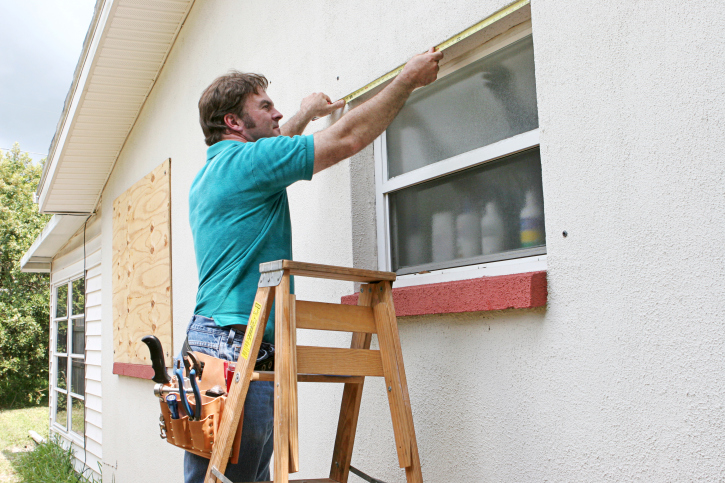Tips for Hurricane Proofing Your Hamptons Home

Peak Atlantic hurricane season is upon us, and this year’s is “shaping up to be above normal with the possibility that it could be very active,” according to the National Weather Service. Hurricanes inevitably cause property damage, but experts say you can take steps to mitigate the likelihood of damage to your home. According to the Insurance Institute for Business & Home Safety (IBHS), “Building science research has identified the areas of a home most at risk from hurricane-force winds and rains,” enabling damage-mitigation strategies to be devised.
Hurricanes present a wide variety of hazards to homes. All of them can be mitigated to some extent, though it would rarely be cost-effective or practical to adopt every possible mitigation strategy. The high winds that are the defining characteristic of hurricanes can severely damage a home’s structure in numerous ways. Combined with a hurricane’s heavy rains, they can also cause major water damage. And for many East End residents the storm surge can cause severe flooding, as Superstorm Sandy demonstrated last year.
The roof and outer walls of a home form a protective barrier around its structure and interior. The focus of many mitigation strategies is to locate vulnerabilities in this barrier and address them so it is strengthened against infiltration by wind and rain.
The roof is the most critical part of a home’s protective barrier. According to the IBHS, “Hurricane damage usually starts with the roof,” and “Damage to your roof … is the greatest risk your home faces when a hurricane strikes.” If your roof is old or damaged and you need to replace it, you should take the opportunity to make it more hurricane- resistant. The old roofing material, such as shingles, must be removed entirely so the sheathing, called the roof deck, can be inspected and repaired if necessary. It’s also important to ensure the roof deck is securely fastened to the structure underneath and is sealed to resist water penetration. The underlying structure should also be inspected and strengthened if necessary. And the new shingles should be certified for wind resistance. If you aren’t ready to replace your roof, using roofing cement to re-adhere loose shingles is a very low-cost way to improve your existing one. You can also have a urethane-based spray applied to the underside of the roof deck to improve its water resistance.
Windows and doors are naturally vulnerable parts of a home’s exterior to wind, flying debris and water, so one of the most important steps you can take is covering them. The IBHS advises that shutters “should be your top priority” and “should be used to cover all windows, doors and garage doors, leaving one door accessible as an exit.” Commercially made shutters are available in a variety of styles. Choose one that has been certified for wind and impact resistance. It’s also possible to use plywood. You should pre-cut it to the sizes of your home’s openings and install permanent anchors so it is relatively easy to fasten when a storm is imminent. A more expensive alternative to shutters is replacing your windows and doors with ones certified for wind and impact resistance. You should also either board up vents on your home’s exterior when a storm is imminent, or replace them with ones certified for wind and water resistance.
Rainwater penetration is also a serious danger to homes in a hurricane. Loosely attached soffits can allow water in, so check to ensure they’re secure. If they aren’t, use waterproof caulking along the joints and then screw them to the structure. You should also use waterproof caulking around gaps in your outside walls, e.g. openings where wires and pipes enter the home. Clear clogged gutters and spouts so they don’t cause water to dam up. If the landscape around your home allows water to pool, you could re-grade it so that water is directed away.
Because a hurricane’s winds can turn any object into a dangerous missile, it’s important to identify outdoor objects that could be blown around by the wind and bring them indoors. You should also trim trees and shrubs, removing weak sections that are likely to pose a hazard.
Flooding from the storm surge poses an additional danger for residents of many areas. If your home is prone to flooding, move items likely to be damaged, like electronics and furniture, above the flood level. When renovating a home in a flood-prone area, you can choose building materials that dry out more easily to reduce the changes of future damage, or raise the home for the ultimate protection.
Of course, none of these mitigation strategies can ensure that your home won’t be damaged in a hurricane. But adopting as many as are practical for your home can lessen the chances and make damage less severe if it does occur.



